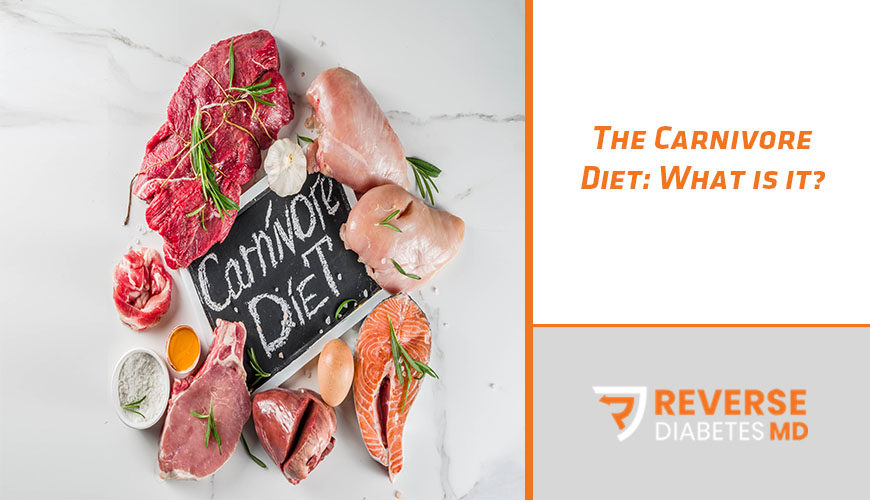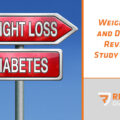Are you considering going to carnivore? This all-meat diet is trending, and many people have reported significant benefits from adopting it. However, totally dropping plant-based food off your plate could have a significant impact on your health. In this article, we’ll discuss what this popular diet is and what it does……
- What Is the Carnivore Diet?
The Carnivore Diet is a restrictive diet that only includes meat, fish, and other animal foods like eggs and certain dairy products. It excludes all other foods, including fruits, vegetables, legumes, grains, nuts, and seeds. Its proponents also recommend eliminating or limiting dairy intake to foods that are low in lactose — a sugar found in milk and dairy products — such as butter and hard cheeses.
The Carnivore Diet stems from the controversial belief that human ancestral populations ate mostly meat and fish and that high-carb diets are to blame for today’s high rates of chronic disease.
Many people who have adopted the carnivore diet report faster weight loss, improved mental clarity, healthier digestion, and even improved athletic performance. Some have also reported remarkable relief from debilitating chronic health problems where conventional methods failed. All this considered, it is definitely worth giving a thought to.
- Exactly which foods are on the Carnivore Diet List?
As the title suggests, the carnivore diet is made up of mainly meat. We will discuss in more detail what it specifically includes and what to avoid.
-Foods Okay on the Carnivore Diet with an emphasis on fattier cuts of meat to take in enough calories:
- Meat: beef, chicken, turkey, organ meats, lamb, pork, etc.
- Fish: salmon, mackerel, sardines, crab, lobster, tilapia, herring, etc.
- Other animal products: eggs, lard, bone marrow, bone broth, etc.
- Low-lactose dairy (in small amounts): heavy cream, hard cheese, butter, etc.
- Water
Generally, salt, pepper, and seasonings with no carbs are allowed.
- Below is a list of what you should NOT be eating:
- Vegetables: broccoli, cauliflower, potatoes, green beans, peppers, etc.
- Fruits: apples, berries, bananas, kiwi, oranges, etc.
- High-lactose dairy: milk, yogurt, soft cheese, etc.
- Legumes: beans, lentils, etc.
- Nuts and seeds: almonds, pumpkin seeds, sunflower seeds, pistachios, etc.
- Grains: rice, wheat, bread, quinoa, pasta, etc.
- Alcohol: beer, wine, liquor, etc.
- Sugars: table sugar, maple syrup, brown sugar, etc.
- Beverages other than water: soda, coffee, tea, fruit juice, etc.
While some people incorporate some of these foods, a true Carnivore Diet does not permit them:
- Milk
- Yogurt
- Cheese
Coffee and tea: These may be plant-based, but some people keep these in the diet.
The carnivore diet can be considered to be a fad. Is there evidence that any traditional populations practiced the carnivore culture?
- The ancestral link to the carnivore diet
Many ancestral groups thrived on large quantities of animal products. However, every single one of these groups also took advantage of plant foods when they were available. The Sioux of South Dakota, the Maasai, Rendille, and Samburu from East Africa, Gaucho Brazilians, the nomads of Mongolia, the Russian Arctic Chukotka and the Canadian Inuit are all communities that predominantly ate meat and fish for their core sustenance. They however all looked for supplementation in vegetables, fruits, berries, lichen and other condiments such as honey and whatever other non-meat sources they could get.
- Carnivore Diet Benefits
The carnivore diet, though not being a new diet in a strict sense, has gained fame in recent times. Let’s look at some of its benefits, both anecdotal and backed by research.
- Weight Loss
As with the ketogenic diet, failing to take in carbs keeps your blood sugar low at all times. You don’t get insulin spikes, so your body has no reason to store incoming calories as body fat. Additionally, the limitations on what you can eat make it almost impossible to get a calorie surplus without a concerted effort.
- Better Heart Health
While there is still no clear link between the consumption of saturated fat and heart disease, there is also a solid pile of evidence that saturated fat can potentially improve heart health.
According to the Mayo Clinic, your cholesterol ratio is a better risk predictor than total cholesterol or LDL. You arrive at it by dividing your total cholesterol number by your HDL score.
Another important factor on cholesterol is that, even though higher LDL numbers are seen as risky, the type of LDL particles you have traveling through your arteries is more important. If they’re small and dense, they’re considered more dangerous than if they’re bigger and “fluffier.” Therefore, two people with the same LDL value could be at very different levels of risk.
According to the Cooper Institute, a good way to determine what kind of LDL particles you have is to find your ratio of triglycerides to HDL cholesterol. The lower the ratio, the less the risk.
- Lower Inflammation
Simply cutting plant foods from your menu can lower inflammation by itself. “If you had a food sensitivity to some of the plants you were eating and had low-grade inflammation,” says Brian St. Pierre of Precision Nutrition, “then removing them will make you feel better.”
The liver produces C-reactive proteins (CRP) in response to inflammation, so measuring CRP levels can indicate how much inflammation is in your system. A level of 10mg/L or less is normal, and 1mg/L or less is good.
Lower inflammation means the reduction of the risk for some chronic illnesses like Type 2 Diabetes, Cardiovascular issues and other conditions that arise as a result of inflammation. A certain kind of inflammation also causes achy joints. There’s some evidence that eating more gelatinous proteins, as you find in bone broth, collagen, and gelatincan improves cartilage health.
- Higher Testosterone
Diets high in fat have been shown to boost testosterone levels. In fact, a study in the American Journal of Clinical Nutrition found that men who followed a high-fat, low-fiber diet for 10 weeks had 13% higher total testosterone than subjects who ate low fat and high fiber.
- Fewer Digestive Problems
Meat is made primarily of protein and fat, which are absorbed high up in the GI tract, leaving little residue leftover to irritate or inflame the gut. In other words, an all-meat diet is effectively a very low-residue diet and gives the gut a rest.
- Increased Mental Clarity
Just as with the ketogenic diet, carnivore dieters report thinking more clearly and having better focus almost right away. Again, as with going keto, there is a break-in period where your body has to figure out how to fuel your system without carbs, so you’ll probably feel lethargic and moody at first. You may have difficulty sleeping and even develop bad breath, an early sign that your body is making ketones, but you can ride it out. Within a few days, or just over a week, you could feel sharper than ever.
- Simplified Dieting
The carnivore diet is the simplest you will ever come across. You eat animal foods when you’re hungry…..period. If you are the kind of person who gets confused counting calories or macros, is tired of weighing portions on a food scale, or isn’t sure what’s gluten-free and what isn’t, a carnivore diet will all but relieve you of having to think.
And while a meat-rich diet may sound like it would break the bank, the amounts you actually consume may not be high, since meat is so satiating. That should keep costs down—especially if you literally aren’t buying any other food.
- Is an all-meat, carnivore diet healthy?
Meat is an essential part of a healthy diet, but eating an all-meat diet is an entirely different subject, and I think we need to be very careful about assuming that an intervention that works well in the short term will also be safe and effective in the long term.
Different people are better suited for different diets based on their physiologies and conditions. The diet that best matches your own body could be higher or lower carb, high fat, or even high protein (though perhaps not as high as the carnivore diet). The right diet for any individual depends on their health, their goals, and which diet and lifestyle would best serve them.
-
References:
- Everyday Health(2018): On the Carnivore Diet, People Are Eating Only Meat: Here’s What to Know. Retrieved from https://www.everydayhealth.com/diet-nutrition/diet/carnivore-diet-benefits-risks-food-list-more/
- Men’s Health(2019) : Inside the All-Meat, Only-Meat Carnivore Diet That Took the Internet by Storm, Retrieved from https://www.menshealth.com/nutrition/a27405997/carnviore-diet-plan/
- Chris Kessler (2019): The Carnivore Diet: Is It Really Healthy? Retrieved from https://chriskresser.com/the-carnivore-diet-is-it-really-healthy/
- Onnit Academy (2017): The Carnivore Diet: Is Eating ONLY Meat Healthy, or Totally Crazy? Retrieved from https://www.onnit.com/academy/the-carnivore-diet/






